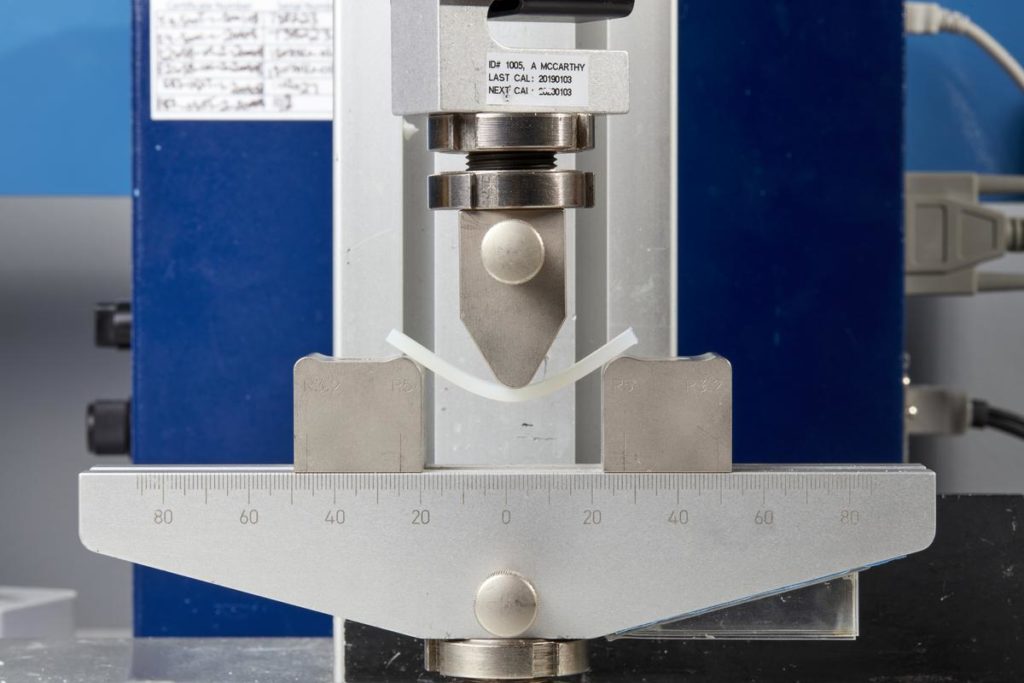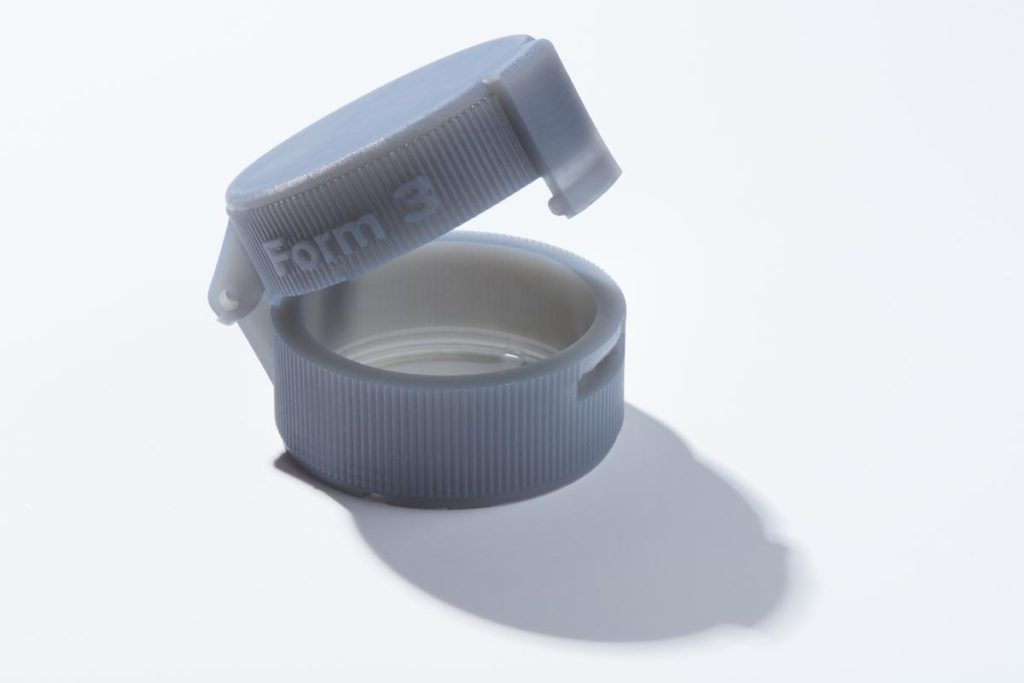Formlabs is expanding its portfolio of 3D printing resins. The latest is Tough 1500, a stiff and pliable polymer that can bend and return to its former shape. Formlabs is targeting the material at engineers, product designers and manufacturers who need pliable parts.
In response to customer feedback, Formlabs developed Tough 1500 Resin as a middle ground between the two ends of the elasticity-toughness spectrum in Formlabs’ existing product range, which already includes durable materials on one end and elastic and flexible photopolymers on the other. Marketed applications include springs, snap fits, press fits and hinges that need to bend and rapidly bend back to shape. It can also be used for jigs and fixtures that must absorb impact and undergo continuous deflection. Formlabs also suggests that it can be used to prototype polypropylene parts.
One customer using the material is Unplugged Performance, which offers upgrades to Tesla cars. Unplugged Performance is currently deploying Tough 1500 parts to install carbon fiber car bumpers onto vehicles. Without 3D printing, it would take about 45 minutes to remove each sensor mount from a bumper and then another 10 minutes to attach it onto the new one. With six such sensors on a car, this process, along with the other upgrades, would take about a day-and-a-half.
Now, the firm 3D prints new sensor mounts from Tough 1500 in 30-unit batches, meaning that the old sensor mounts do not need to be removed from the old bumpers and reattached. Unplugged workers simply bond the new, 3D-printed mounts directly to the vehicles, aiding the company in improving throughput to three cars per day.
Formlabs’ range of materials is growing slowly but steadily. By manufacturing its own photopolymers, the company is able to ensure the quality of the resins and that it works with its hardware. For hardware companies that sell their feedstock directly to their users, a continuous stream of revenue is generated. However, it also constrains the material range that users can rely on.
While companies such as Formlabs retain this razor-and-blade model, others like HP and Origin have adopted “open materials” platforms in which chemical companies work more or less directly with the hardware manufacturers to qualify their materials for use in their 3D printers. This frees up the material partners to develop their own feedstocks. The concept of open materials is being increasingly championed in a space that has previously been dominated by closed systems. Consider Jabil’s moves last year into material development, for instance.
As Formlabs continues to develop new materials, it will also have to do so for its new 3D printing technology line: low-cost selective laser sintering (SLS). The Fuse 1 3D printer should begin shipping mid-2020, at which point we will get a chance to see the material development strategy the company has for SLS powders, as well.
Subscribe to Our Email Newsletter
Stay up-to-date on all the latest news from the 3D printing industry and receive information and offers from third party vendors.
Print Services
Upload your 3D Models and get them printed quickly and efficiently.
You May Also Like
Heating Up: 3D Systems’ Scott Green Discusses 3D Printing’s Potential in the Data Center Industry
The relentless rise of NVIDIA, the steadily increasing pledges of major private and public investments in national infrastructure projects around the world, and the general cultural obsession with AI have...
Formlabs Teams Up with DMG MORI in Japan
In late June, Nick Graham, Chief Revenue Officer at Formlabs, announced on LinkedIn that the company had partnered with DMG MORI, one of the world’s leading machine tool companies, to...
EOS in India: AM’s Rising Star
EOS is doubling down on India. With a growing base of aerospace startups, new government policies, and a massive engineering workforce, India is quickly becoming one of the most important...
3D Printing News Briefs, June 25, 2025: R&D Materials, 3D Printed Veneers, & More
In today’s 3D Printing News Briefs, 3DXTECH has launched a program that gives customers early access to experimental materials, and the first Lithoz CeraFab Multi 2M30 in the Czech Republic...





































